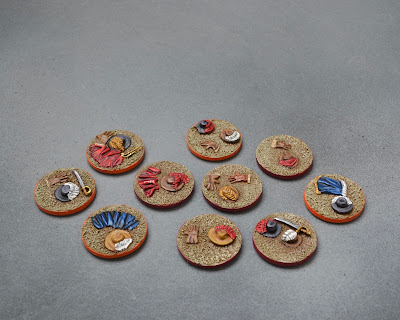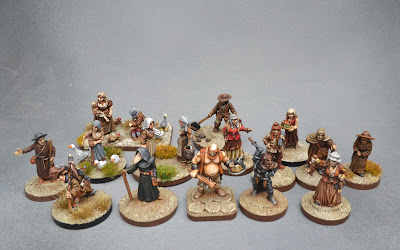Since my last Blog post, a couple of people have asked me about reading and viewing material which might accompany the game which Nick, Rich and myself have been working on. I thought it might be fun to mention some of the books I’ve been reading as background and inspiration for “With Flashing Blades”. Like any list, this is not comprehensive. The literature for swordsmanship, duelling and swashbuckling of all kinds is huge, and spans different genres from historical fiction to swords-and-sorcery, and from the supernatural to science fiction. Here, I’ve confined my list to the books which I personally found useful as encouragement for the game.
Another couple of small caveats: I’ve not listed any historical sources here. I’ll prepare a Blog post in a week or so on that subject, looking at some of the background to early 17th Century France and also the ‘Schools’ of swords-handling, duelling and fencing which I found really interesting in the context of working on the game. I have also limited this blog to written material. A future Blog post will contain all the film and TV inspiration, including that theme tune!
So let’s start with the grand-daddy of them all, “The Three Musketeers” by Alexandre Dumas. I thought I knew this book, but I’d never read it before as a complete novel. As I read it from cover to cover for the first time last month, I was really surprised. It is not the book I thought I was going to read. The actual sword fighting is infrequent in the book, and takes place quickly over very few pages. I’ll not give too much away (just in case you, dear Readers, have not read the book), but it is not one of those novels where there is a sword-fight every twenty pages. What is, however, very much present is intrigue. There are plots, plans, stories, developments and yet more intrigues on top of all that. When you read the novel, all the various plots hang together very well and the central arch of the story is not difficult to follow. This is not “The Name of the Rose” or an Agatha Christie novel – the intrigue, though deep and pernicious, never obscures the story in which the lives of our heroes is unfurled.
And, while we’re speaking of heroes, it surprised me that huge chunks of the book are placed in the in upper echelons of society. We are frequently present in the world of the King, the Queen, the Cardinal and the Duke of Buckingham. Dumas loves to name-drop the titles of Dukes, Counts, Duchesses and nobles generally. The actions of the musketeers frequently revolve around noble and royal characters, not the opposite.
Dumas also loves place-name dropping. Much more familiar to his 19th Century French audience than to me in 2021, there is a litany of French street and place names, including prisons, palaces, market places and execution sites. Some we know (La Bastille), but some are much more unfamiliar. I thought that a map would be helpful in reading the book, and I found myself reaching for a guidebook of Paris in the early chapters. You don’t need to do that, but it’s fun to have alongside you as you read the novel.
Finally, a huge shout-out to one of the Audible audiobooks of the “The Three Musketeers”. I was reading the Penguin Classics version of the book, and chose the accompanying Audible version, narrated by the well-known actor, Paterson Joseph. The narration by Paterson is a total delight.
I love Audible generally, and Mr Joseph’s narration was one of the finest narrations I’ve heard on the site. He has a real ear for French names, and really evoked the sense of place with each of the names of the people and places being pronounced. I was really thrilled to learn (from a Twitter post) that Paterson regarded his work on the Audible narration of "The Three Musketeers" as one of his best pieces of work. I think its amazing and, if you have any interest at all in Dumas’ novel, I would strongly recommend you give Paterson’s Audible narration a try.
From Dumas’ classic, the next suggestion I have on my list is the canon of books by Arturo Pérez-Reverte, featuring Captain Alatriste. I came to these books the long way around. I first read Pérez-Reverte’s books in the 1990s and early 2000s, starting with the complicated (but remarkable) “Club Dumas”. This book, incidentally, has a rich seam of connection to Dumas and “The Three Musketeers” (no spoilers, folks), but that was rather lost on me at the time, as the book is really about the supernatural, or – more accurately – the possibility of the supernatural.
From there I read Pérez -Reverte’s other books, including the most excellent “The Fencing Master”. Don Jaime, the main character of the book, is one of my literary heroes, especially as I have got older. His sparse, austere and controlled lifestyle in Madrid as a 19th Century fencing master is something I’ve often thought about, particularly as an antidote to the uncontrollable and byzantine mess of my normal family life! I really enjoyed the book when I read it in 2003, and I enjoyed re-eading it last year in the depths of the pandemic.
But I digress. All of these books just prepared me for Pérez-Reverte’s “Alatriste” series of books. Several of my friends recommended the “Alatriste” series to me (thank you!), and I have not been disappointed. Captain Alatriste is the hero of the series, being a battle-scarred and indefatigable veteran of Spain’s wars of the early 17th Century. Perhaps inevitably for a literary hero, Alatriste finds that fighting the French and Dutch in Flanders to be less dangerous than navigating the treacherous alleys and squares of Madrid, Seville and Toledo. The books are narrated by a wonderful character, Inigo Balboa, a young companion and sometimes-manservant. Unlike Dom Jaime in “The Fencing Master”, Inigo gives depth and humanity to Captain Alatriste's journeys, and I feel Inigo as a narrator adds to the stories considerably.
All of the Alatriste books I have read are fun and worthwhile. So far, I’ve really enjoyed “The Purity of Blood” the most, but I have yet to tackle “Pirates of the Levant”. Recommended reading and very much in the right vein for “With Flashing Blades”.
And finally, two left-field inspirations. “With Flashing Blades” is set in Paris, in 1622, a city with a good claim to being the centre, or one of the centres, of the world at that time. Thinking about the 'place' of the city in a game might seem a little bit abstract. While we wanted to make our game of “With Flashing Blades” to be a miniature wargame (and “not a roleplaying game”), I did also want to think about how we could make the idea, and the themes, of a city come to life in a small table-space.
In that context, I’d like to recommend two wonderful books, from very different genres.
“Invisible Cities” by Italo Calvino is a tour de force about the potential of the city as an experience. Is it literature? Is it philosophy? Is it a mediation? Or perhaps it's a mystery? Who knows? Not me, for sure. But I loved every page and some of the images conjured by Calvino in the novel are simply spell-binding. “Invisible Cities” is not the city of “With Flashing Blades”, but it might hopefully help us capture some of the chaotic fun and confusion of setting a game within our chosen city of 1622 Paris.
And last but never least, is a slim booklet which I bought through Drive Thru-RPG. If you've never come across Chris Kutalik’s “Fever Dreaming Marlinko”, you are missing out.
Chris’s book is small in size (only 68 pages), but it's a masterpiece. “Fever Dreaming Marlinko” is a roleplaying guide to the strange city of Marlinko, and serves as a ‘city adventure supplement’. You don’t need to be a fan of role-playing games, or play the Labyrinth Lord system to be inspired by Chris’ book.
Funny, rude, dramatic and constantly inventive, it’s a terrific example of how to create a city which really feels like it exists as a backdrop to the gaming action. If we can do anything like this in “With Flashing Blades”, we would be very pleased.


































































